Auto Body Shop Layout & Floor Plans for Anchor Pots

The following stall layouts show ideal setups for Champ floor anchor pots, such as the top-selling Champ 1600. Use these floor plans to make the best use of your space and maximize your options for pulling angles, whether your laying out a floor plan for an auto body shop or a home workshop.
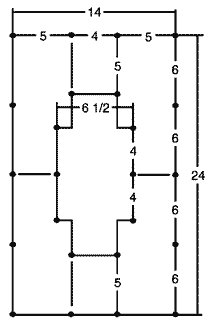
STALL NO. 1 - 24 Floor Anchor Pots
The ideal stall for the Uni-Bench (such as the Champ 3000). Max 6 ft spacing for perimeter pots plus 10 pot interior. Ability to make any pull (including twist from front rails, rear rails and passenger section).

STALL NO. 2 - 18 Floor Anchor Pots
Alternate stall for the Uni-Bench. 8 ft spacing for perimeter pots adequate for most pulling situations. 6 pot interior allows Uni-Bench to be securely tied down
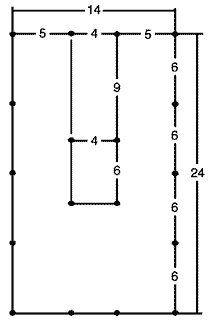
STALL NO. 3 - 18 Floor Anchor Pots
4 pot interior for old technology ladder frames. Best spacing for perimeter pots
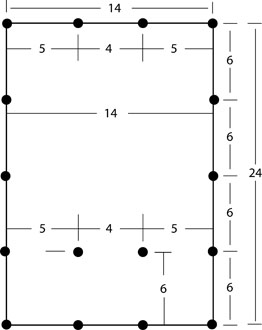
STALL NO. 4 - 16 Floor Anchor Pots
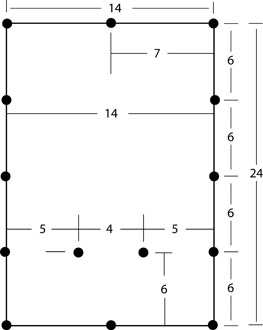
STALL NO. 5 - 14 Floor Anchor Pots
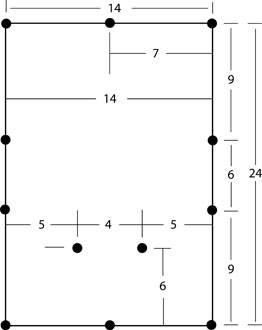
STALL NO. 6 - 12 Floor Anchor Pots
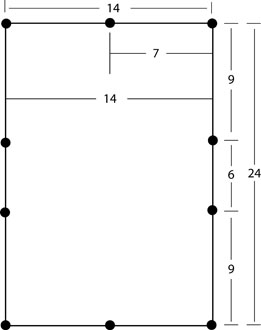
STALL NO. 7 - 10 Floor Anchor Pots
Stalls should be a minimum of 14' x 24'. This permits the car to stay tied down without moving it during repositioning of pulls. If stall were smaller, one would have to move the car for side or end pull. Maximum 6' spacing of perimeter pots keeps power pulling post close to perimeter by not encroaching into center of stall when bridging chains between them (see diagram to right - using a shallow back chain angle will increase chain pressure).
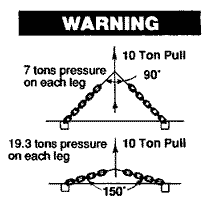
Warning:
Stalls should be a minimum of 14' x 24'. This permits the car to stay tied down without moving it during repositioning of pulls. If stall were smaller, one would have to move the car for side or end pull. Maximum 6' spacing of perimeter pots keeps power pulling post close to perimeter by not encroaching into center of stall when bridging chains between them (see diagram to right - using a shallow back chain angle will increase chain pressure).


